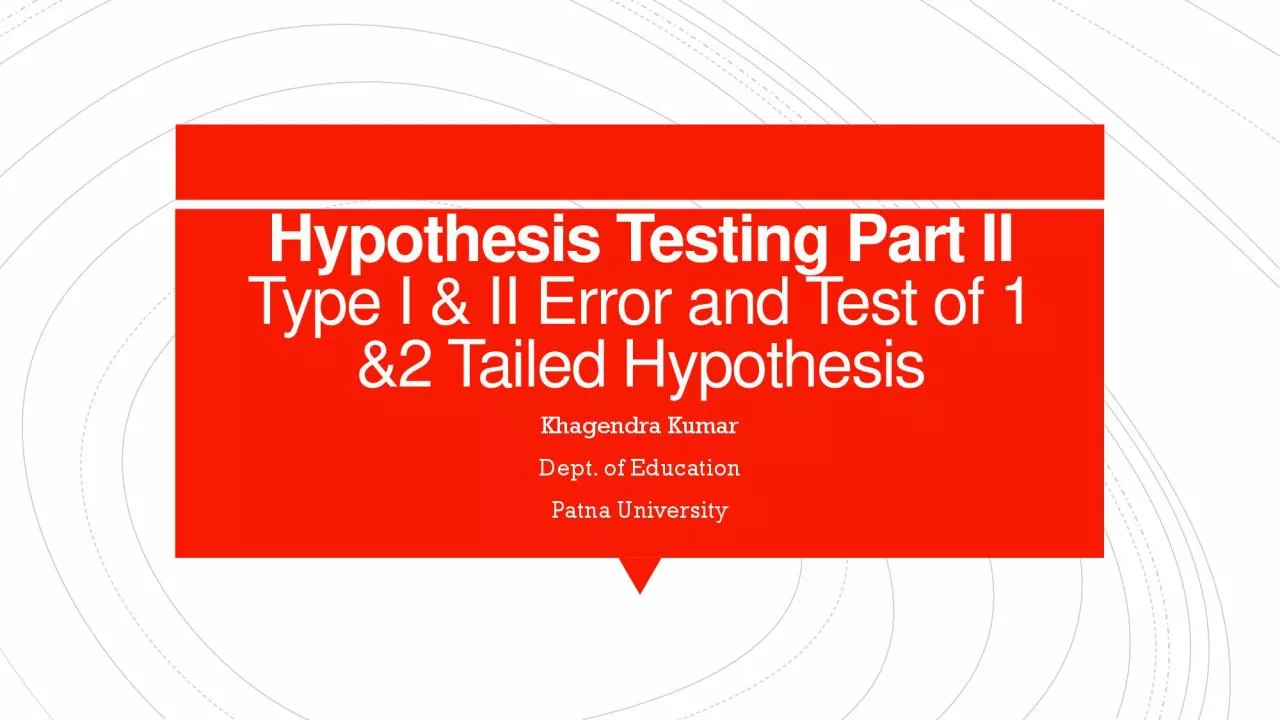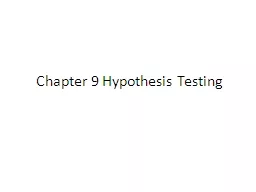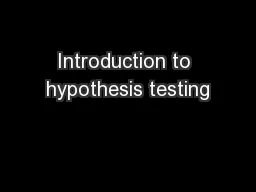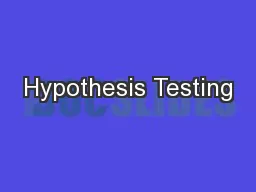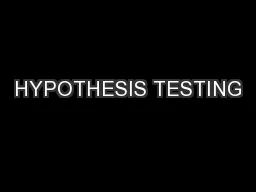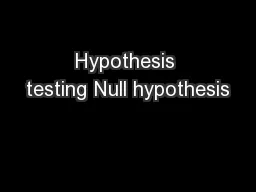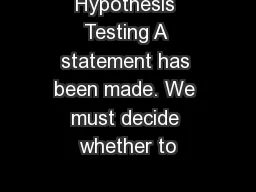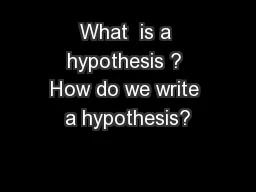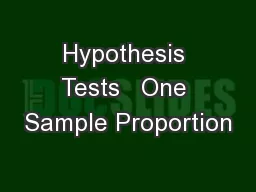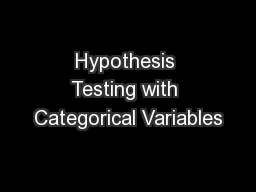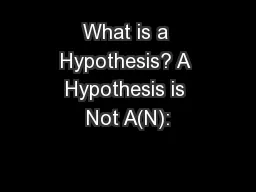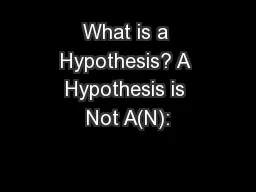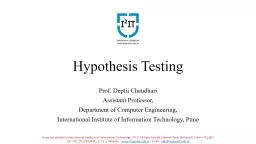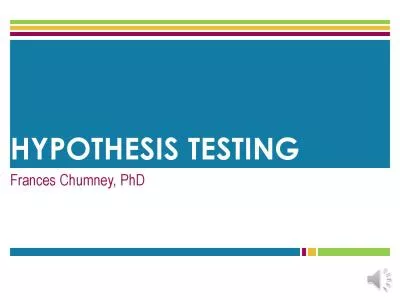PDF-Hypothesis Testing Part II
Author : brianna | Published Date : 2022-09-08
Type I II Error and Test of 1 2 Tailed Hypothesis Khagendra Kumar Dept of Education Patna University Decision Making on Accepting Rejecting Hypotheses To take
Presentation Embed Code
Download Presentation
Download Presentation The PPT/PDF document "Hypothesis Testing Part II" is the property of its rightful owner. Permission is granted to download and print the materials on this website for personal, non-commercial use only, and to display it on your personal computer provided you do not modify the materials and that you retain all copyright notices contained in the materials. By downloading content from our website, you accept the terms of this agreement.
Hypothesis Testing Part II: Transcript
Download Rules Of Document
"Hypothesis Testing Part II"The content belongs to its owner. You may download and print it for personal use, without modification, and keep all copyright notices. By downloading, you agree to these terms.
Related Documents

